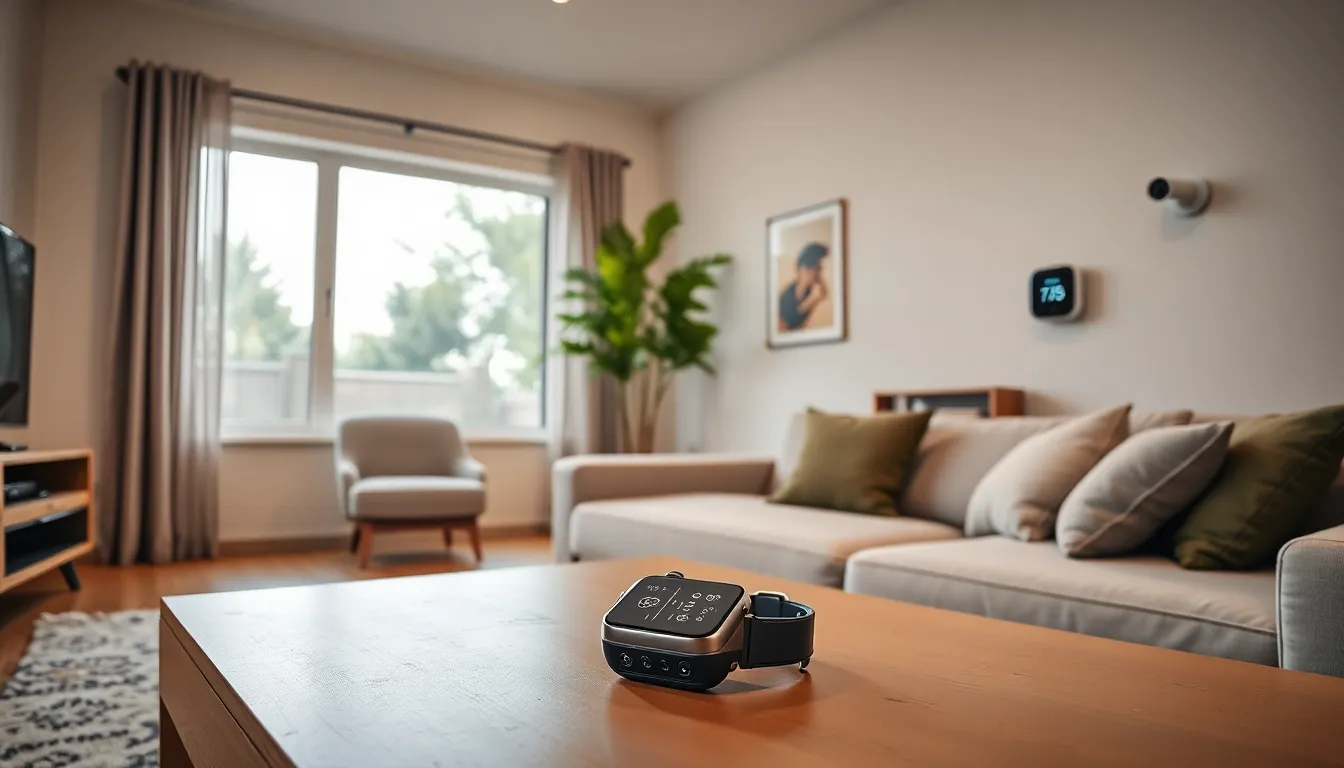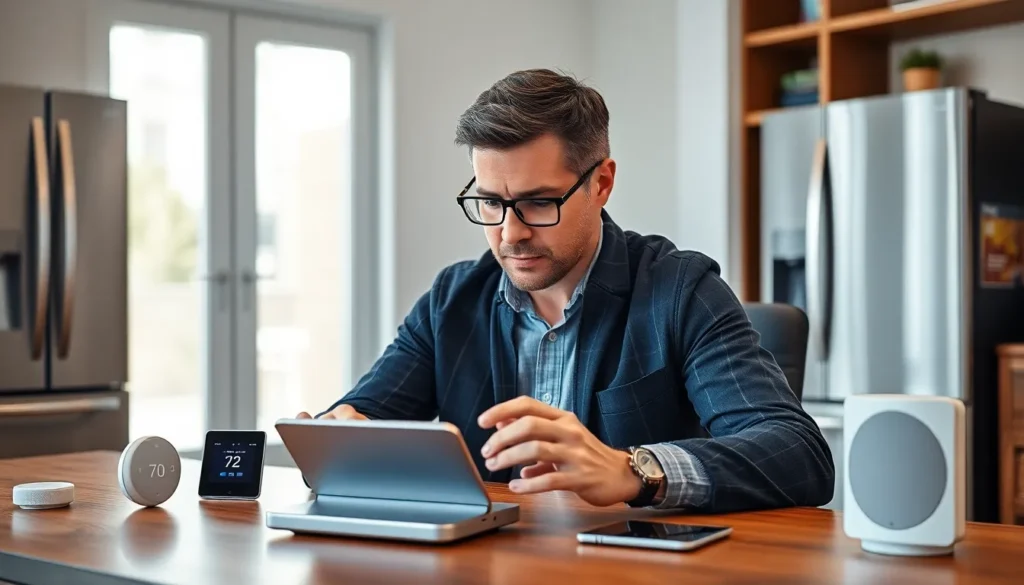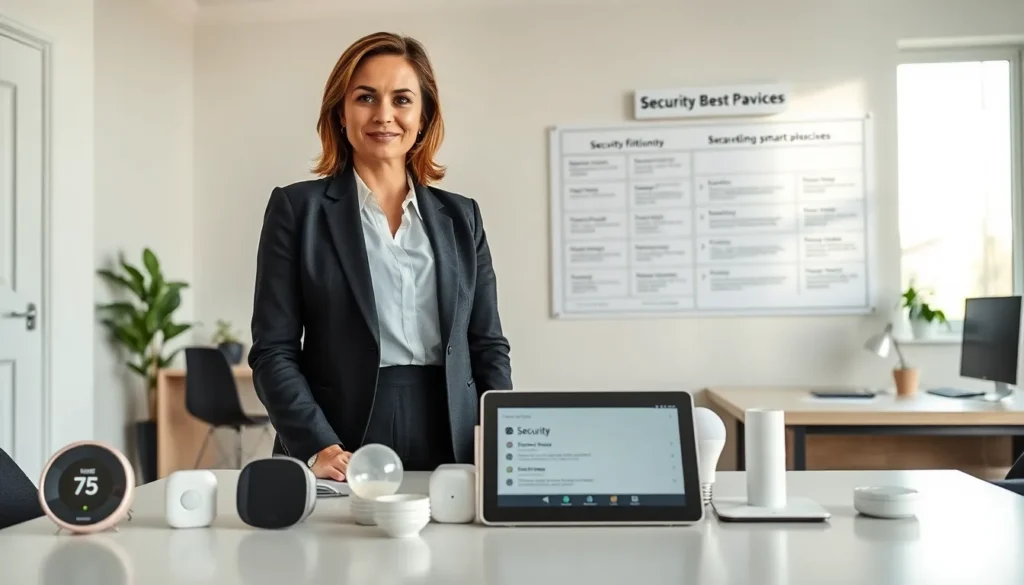In a world where smart devices reign supreme, navigating network settings can feel like deciphering an ancient scroll. But fear not! Understanding these settings is the key to unlocking your devices’ full potential. Imagine your smart fridge ordering groceries while your thermostat keeps your home cozy—all without a hitch. Sounds great, right?
Table of Contents
ToggleUnderstanding Smart Device Network Settings
Navigating network settings for smart devices is crucial for optimizing their performance. Understanding these settings unlocks the full potential of devices like smart fridges and thermostats.
Importance of Network Settings
Network settings determine how devices connect to the internet and communicate with each other. Proper configuration boosts reliability and performance, enhancing user experience. When devices operate on a secure network, vulnerabilities decrease, protecting personal data. A well-managed network ensures seamless updates and integration with home automation systems. Ease of use improves significantly when these settings are correctly implemented, making it simpler to control multiple devices.
Common Network Settings for Smart Devices
Popular network settings include Wi-Fi configuration, IP address management, and security protocols. Wi-Fi configuration involves connecting devices to the home network. IP address management helps assign unique addresses, allowing devices to communicate effectively. Security protocols, such as WPA2 or WPA3, protect data and transactions within the network. Users might encounter settings for device discovery and pairing, which streamline synchronization between devices. Each of these settings plays a vital role in maintaining a functional, interconnected smart home ecosystem.
Types of Smart Device Networks

Understanding smart device networks is vital for effective home automation. Two primary types of networks facilitate communication among these devices: Wi-Fi and Bluetooth.
Wi-Fi Networks
Wi-Fi networks serve as the backbone for many smart devices. Most modern smart home gadgets, like cameras and smart speakers, connect through these networks to access the internet. High-speed internet is crucial for real-time data transfer. Many devices require a stable Wi-Fi connection for optimal performance. Configuration involves entering the correct SSID and password, ensuring devices communicate seamlessly. Security settings, such as WPA2 encryption, protect the network from unauthorized access.
Bluetooth Networks
Bluetooth networks enable short-range connections among smart devices. Commonly used for accessories like smartwatches and fitness trackers, Bluetooth is efficient for low-energy communication. Connection setup generally involves pairing devices through a simple process. Strength lies in its ability to provide a direct link without consuming significant battery power. Devices typically operate within a range of 30 feet, making Bluetooth ideal for localized control. Compatibility with various operating systems enhances user experience and fosters integration into existing ecosystems.
Configuring Smart Device Network Settings
Configuring network settings for smart devices ensures optimal performance and connectivity. This process involves several key steps that users should follow carefully.
Step-by-Step Configuration
- Start by accessing the device’s settings menu, often found in the app associated with the device.
- Select the option for network or Wi-Fi settings.
- Enter the Wi-Fi network name (SSID) and password accurately to establish a connection.
- Choose appropriate security settings, such as WPA2, to enhance network security.
- Save the configuration, then restart the device to finalize changes.
Completing these steps ensures that smart devices connect correctly to the network, enabling robust functionality and communication.
Troubleshooting Common Issues
Addressing network issues involves systematic checks to restore connectivity. First, ensure the Wi-Fi network is functioning by testing it on other devices.
If the smart device fails to connect, verify that the correct SSID and password are entered. Restarting the device often resolves temporary glitches or connectivity problems. Next, check for firmware updates, as outdated software can hinder performance.
Lastly, interference from other devices might disrupt the connection. Positioning the router centrally in the home can enhance signal strength and expand overall coverage.
Best Practices for Smart Device Network Security
Smart device network security is essential for maintaining a safe and efficient smart home ecosystem. Implementing best practices ensures devices operate securely and reliably.
Securing Your Wi-Fi Network
Securing the Wi-Fi network forms the first line of defense. Change the default network name to something unique to prevent easy identification. Utilize WPA2 or WPA3 encryption for strong protection. Regularly update the router’s firmware to counter newly discovered vulnerabilities. Consider disabling remote management features that can expose your network to external threats. Creating a guest network provides an additional layer of security, allowing visitors to connect without accessing personal devices directly.
Managing Device Permissions
Managing device permissions plays a crucial role in enhancing security. Limit permissions for each smart device to only what it requires for functionality. Regularly review and modify permissions as needed when new software updates are available. Use strong, unique passwords for each device and enable two-factor authentication whenever possible. Monitor device access logs to identify any unauthorized attempts and remove unknown devices from the network immediately. Establishing clear permissions helps maintain control over devices and reduces potential security risks.
Navigating smart device network settings is essential for optimizing performance and enhancing home automation. By understanding the intricacies of Wi-Fi and Bluetooth configurations users can ensure seamless communication among devices. Proper security measures not only protect personal data but also foster a reliable smart home ecosystem.
Taking the time to configure network settings correctly can lead to a more efficient and enjoyable experience with smart technology. With the right approach to network management users can unlock the full potential of their smart devices and enjoy the conveniences they offer.













